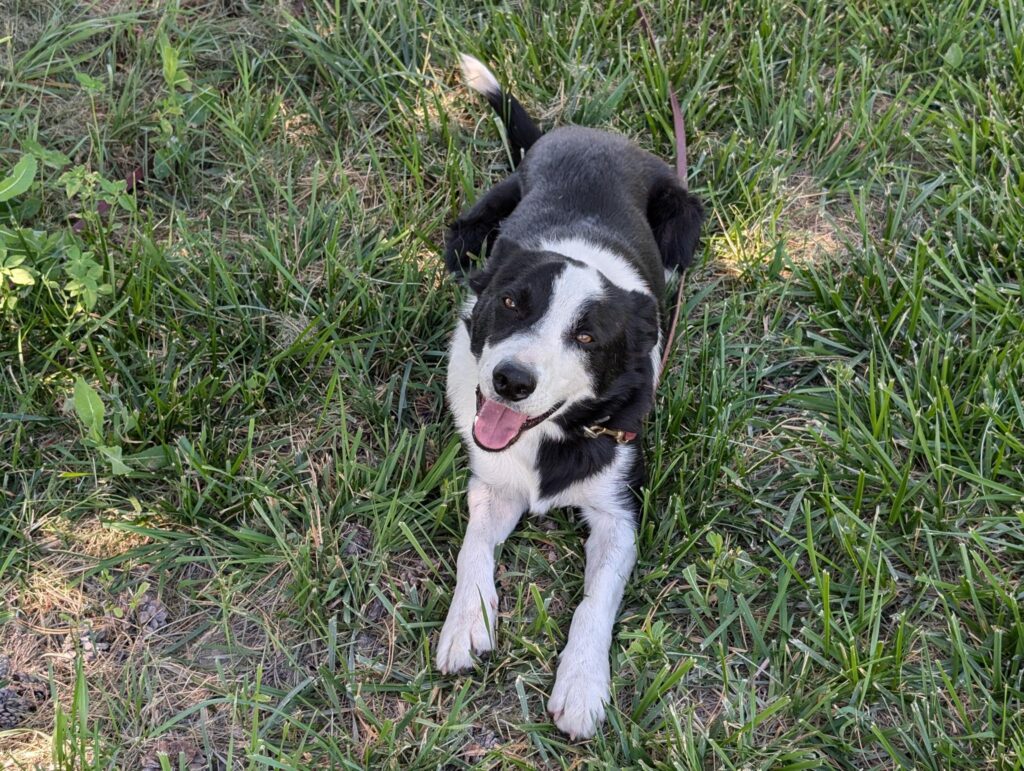Week 1 Day 3 – Introducing Checks and Corrections

Improving on my D2 longeing ring, I’ve set up 6 new points of interest along the outside of my working area. At 12:00, 4:00, and 8:00, I’ve placed orange cones to help me delineate my pattern of movement. Halfway between these points there are competing motivators outside the circle at 6:00 (busy road with construction), 10:00 (feral cat colony), and 2:00 (flag flapping on the fence line). This means that as I travel between the orange cones, a distraction of the Defense or Prey variety will always be present on the outside of the ring opposite Ellie, who I’ve again left at the center.
I’ve placed a tactile indicator 10′ down my longe from the snap, which is where I’ll be lightly holding a check loop with 5′ of reserve slack. Now, any time that Monkey gets more than 10′ away from me, he’ll pull the loop from my fingers and I’ll immediately turn and move to the center of the ring. Furthermore, anytime Monkey walks all 4 feet past the scented boundary along the outside of my longeing ring, I’ll make the same turn back to the center.
The scent of the boundary line and the momentary tug that Monkey feels when he pulls the slack reserve from my fingers are being introduced as “checks.” What is a check? In the context of animal training, a “check” is a momentary sensory intervention used to pause, interrupt, or redirect an animal’s movement or behavior to reassert control, get attention, or enforce posture. In the beginning of the session, these checks mean nothing to Monkey, but through a process of forward conditioning, he soon learns that they predict my turn back toward the center of the circle, and that if he redirects his attention toward me, he can avoid receiving a correction when he reaches the end of the longe.
A check is different from a “cue,” which is a sign that tells the animal which action is expected next. I’ve found it’s best to shape the behavior first before introducing a cue. While a cue should initiate a behavior change, a check doesn’t always. Sometimes, I’ll use checks while a dog is already doing what I want in order to test his commitment to the action – other times, I’ll use checks while a dog is flirting with going off-task to cause him to make a decision. Simply put, checks make the dog ask himself, “Is this really what I’m supposed to be doing?” Skillful use of checking during the shaping, training, proofing, and polishing phases makes for a fluid and natural form of learning that guides the dog toward success while minimizing the need for corrective actions.
Monkey’s doing a great job at following my lead and respecting the slack in the longe so I make sure to give him a sincere word of praise when he makes a good choice. He’s easily staying within 5′ of me most of the time so tomorrow I’m going to see if I can get him to within about 3′. I think by the end of Week 1 I’ll be able to switch him to a 6′ training lead with no pulling.
Keep up with Monkey’s training journey:
